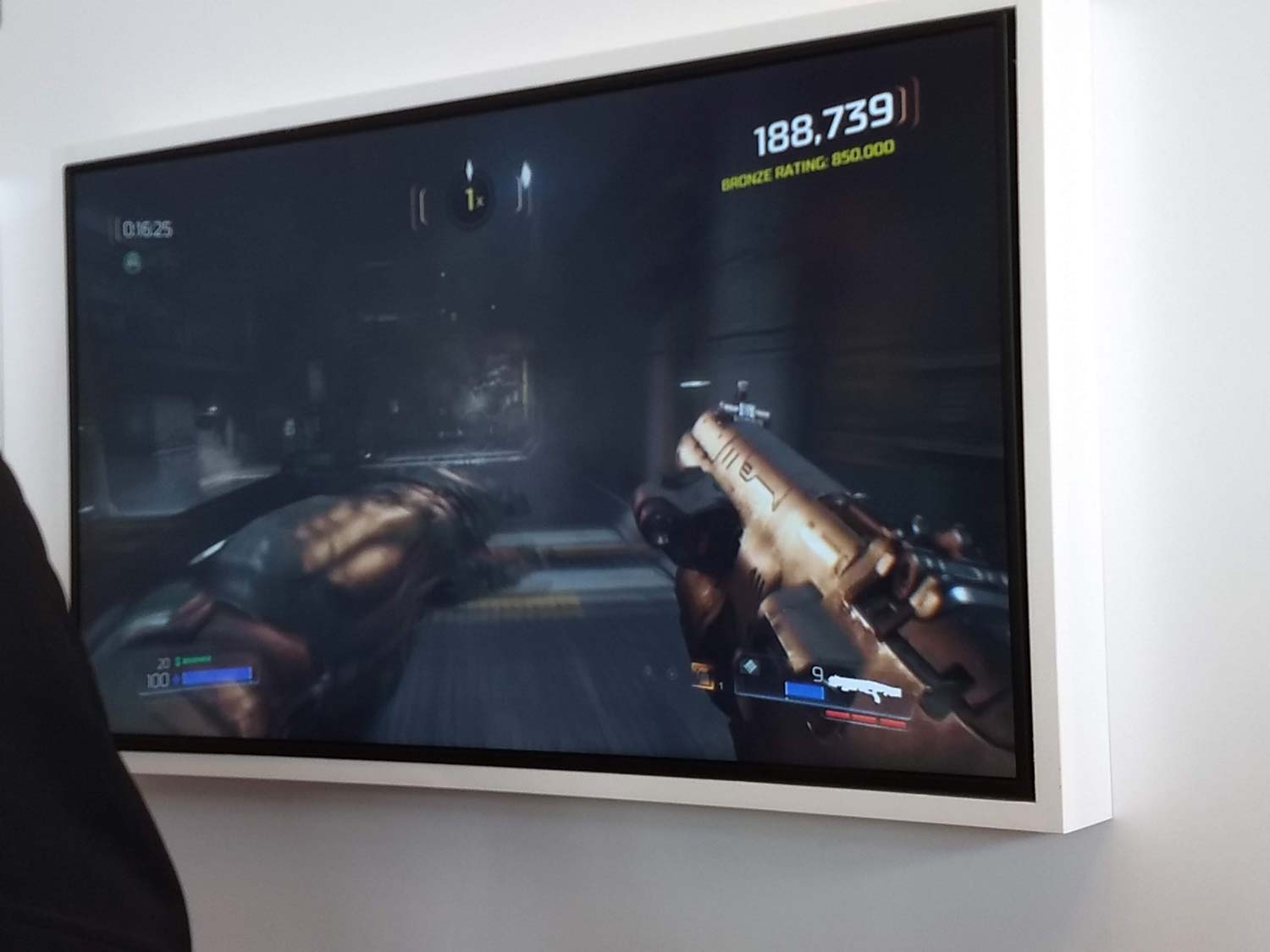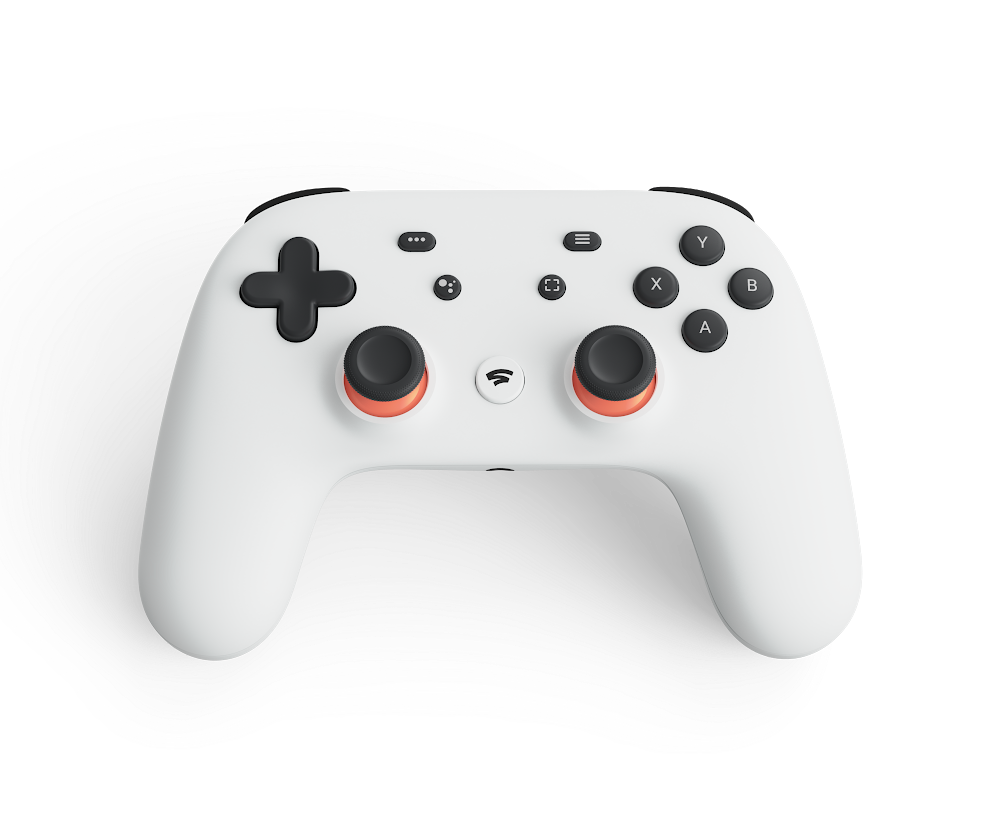I Just Played Doom on Google Stadia: Here’s How It Feels
Playing Doom on Google's new Stadia gaming platform answers some of our questions about the upcoming release. Here's what we learned from our hands-on time.
SAN FRANCISCO – When Google says that its upcoming Stadia platform is input-agnostic, the search giant is not kidding.
You can use Google’s proprietary controller; you can use a PS4 controller; you can even use a clunky old Logitech controller, as most of the demo stations at GDC were doing. However, I learned firsthand that you can also use a mouse and keyboard— a real boon for playing an FPS like Doom (2016).
I got to try Doom with a mouse and keyboard for myself at GDC 2019, and while I didn’t get much time with the game, I was pleased on two counts. Not only did Stadia handle the game without any lag or much perceptible downscaling, but it handled the mouse-and-keyboard input beautifully. Those who were concerned that the Stadia wouldn’t be able to handle traditional PC genres (like FPS, RTS and MOBA) can rest a little easier.
First, if you’ve already played Doom, you know how fluid the game feels, and how satisfying its shooting can be. (If you haven’t, it’s available on almost every modern platform, and well worth a few hours of your time.) As such, if Stadia didn’t recreate the experience faithfully, it would be immediately apparent. Playing Doom with screen tearing or delayed inputs wouldn’t really be playing Doom at all.

As such, before I even began the game, a Google representative demonstrated that it was really running in Chrome on a crowded network. She opened up a browser pane that displayed information on the “gamelet,” including its network and session status. This was good to know, since it is not at all uncommon to run existing PC builds of games at trade shows, even if the booth in question is highlighting another platform.
MORE: Google Stadia: Our 3 Biggest Concerns
Another representative explained that while the laptop running the game was running a wired Ethernet connection, it was a busy network shared with every other Google machine in the display area. As such, Doom wasn’t running at full tilt, with 4K resolution, 60 fps and sterling textures – but it was running without any kind of slowdown or fuzziness. You’ll still need a strong Internet connection for Stadia, but it doesn’t seem like you’ll need to shut down every other Internet-connected device in your home.
I had only a few minutes to play Doom, since there were no official demo sessions, just an impromptu line that formed in front of the display booth. But the mouse and keyboard — a Logitech office model and SteelSeries gaming model, respectively — made me feel right at home. I was able to run through the corridors of a futuristic space base, gunning down bulkheads for target practice as I went. No matter how fast I turned or how far I jumped, the peripherals kept up with my movement, and the visuals showed me just what I expected to see.

“Google Stadia supports the peripherals it said it would” may not be the most earthshaking story from GDC, but in a way, it’s a remarkable advancement. Look at how hesitant the PS4 and Xbox One have been to embrace mice and keyboards, even though they have the infrastructure to support such peripherals. At present, if you want to play RTS, MOBA or turn-based strategy, you pretty much need to invest in a good gaming PC, which could cost $1,000 or more.
If Doom is any indication, Stadia could open up beloved genres to brand-new audiences, provided they’re willing to invest in a mouse and keyboard – and you can get a perfectly decent mouse and keyboard for less than $40. We’ll see whether Stadia has any other mouse-and-keyboard-optimized titles on the docket when Google reveals more information about the platform this summer.
Be sure to check out our GDC 2019 hub page for all of the latest gaming news and hands-on impressions straight out of San Francisco.
Sign up to get the BEST of Tom's Guide direct to your inbox.
Get instant access to breaking news, the hottest reviews, great deals and helpful tips.
Marshall Honorof is a senior editor for Tom's Guide, overseeing the site's coverage of gaming hardware and software. He comes from a science writing background, having studied paleomammalogy, biological anthropology, and the history of science and technology. After hours, you can find him practicing taekwondo or doing deep dives on classic sci-fi.

